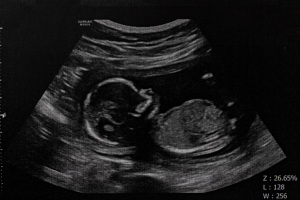Archaeological Discovery Confirms Biblical Account of Pooping on False Gods
No Pooh-Poohing Biblical History

Once again archaeology confirms biblical history. I'll explain the latest find — just bring along your sense of humor.
The late Chuck Colson was known for many things: his role in the Watergate scandal, his subsequent conversion to Christ; his work with prisoners around the world, and his efforts in promoting a Christian worldview.
But to his closest associates, Chuck was also known for his sense of humor. He loved practical jokes, and as odd as this sounds, jokes about bathroom mishaps — the kind of potty humor made famous by humorist Dave Barry.
So for this and many other reasons, I really wish Chuck were around to deliver this particular commentary.
You see, archaeologists from the Israel Antiquities Authority, digging in the remains of what was once the biblical city of Tel Lachish, made a startling discovery that confirmed the biblical text in a most startling way: They found an ancient toilet.
To fully appreciate the significance of the find, we need to go back in time to the eighth century before Christ. King Hezekiah, one of only a handful of post-Davidic kings that earns the Bible's seal of approval, initiated series of reforms aimed at eradicating syncretism in Judah.
At the heart of these reform efforts was eliminating what the Bible called "high places" or bamot in Hebrew. These were cultic sites containing an altar, usually located, as the English name suggests, on a hill or a ridge.
While ostensibly dedicated to the worship of YHWH, over time the sites, and the worship that occurred at them, became syncretistic: pagan deities were honored alongside YHWH. Thus we are told that asherim, or "Asherah Poles," cultic objects dedicated to the worship of the Canaanite goddess of fertility, were erected at these sites.
Hezekiah was commended because "He removed the high places, smashed the sacred stones and cut down the Asherah poles."
And that brings me back to the discovery at Tel Lachish. Archaeologists found a "large room that appears to have been a shrine. The room contained two four-horned altars, whose horns had been intentionally damaged." Excavation leader Sa'ar Ganor "believes that the destroyed altars corroborate biblical references to King Hezekiah's reforms: his efforts to centralize worship in Jerusalem and abolish it elsewhere."
As if this weren't exciting enough, Ganor and his team found something else in the room: a "seat carved of stone with a hole in the center." In other words, a toilet.
Ganor believes that this "was unquestionably a form of desecration of this shrine room," and he has ample biblical reason to do so. In 2 Kings 10, we're informed that following the fall of King Ahab, Jehu and his followers "demolished the pillar of Baal, and destroyed the temple of Baal, and made it a latrine to this day."
Apparently, desecration by bathroom renovation was practiced in both kingdoms.
This latest discovery comes on the heels of other discoveries confirming a great deal of what the scriptures tell us about Hezekiah and his reign. And to think that only a few decades ago, many, if not most, scholars doubted that Hezekiah, along with ancestors David and Solomon, ever actually existed. And now they seem to be popping up everywhere.
That should not come as a surprise. The Bible is the best-attested book of antiquity. Nothing else is within the same solar system. All of this is another reminder that the biblical faith is firmly rooted in actual human history and not in some mythological "once upon a time."
That an ancient toilet is the latest among many archaeological finds to affirm the historicity of Scripture — well, all I can say is, I wish Chuck Colson were here.
Originally posted at breakpoint.org.





























